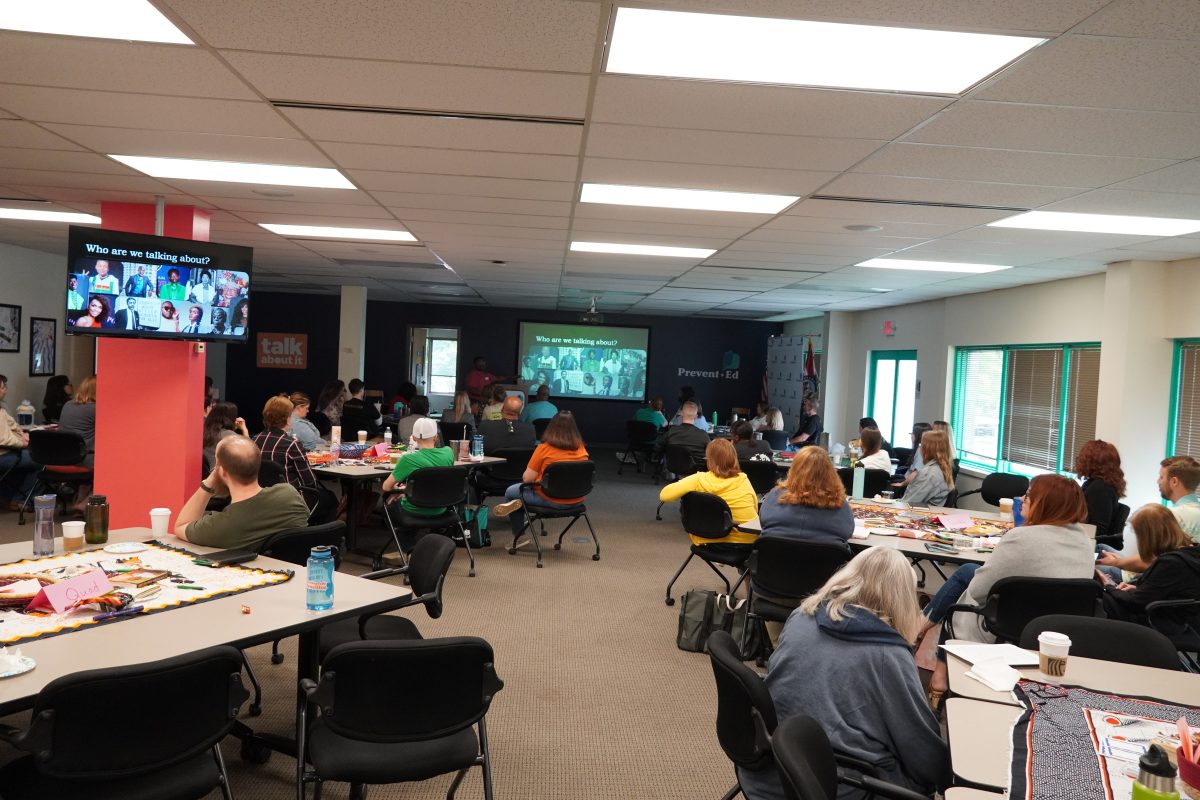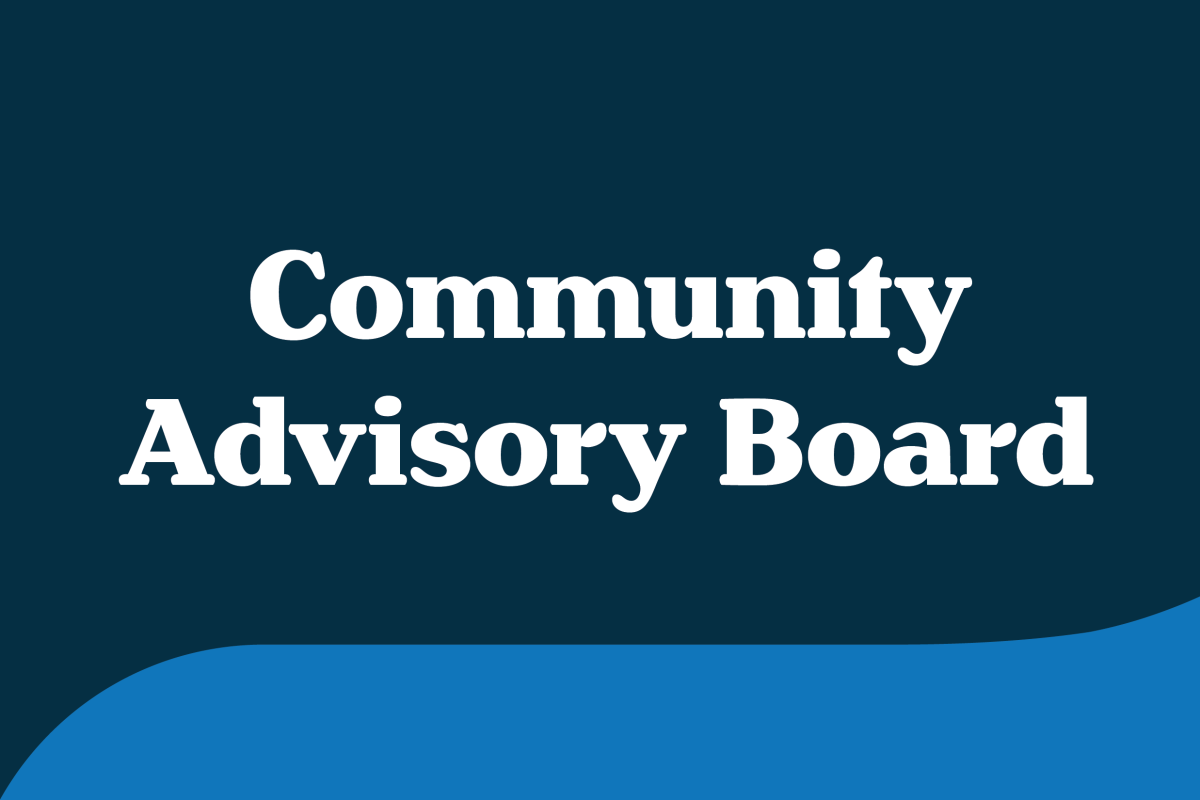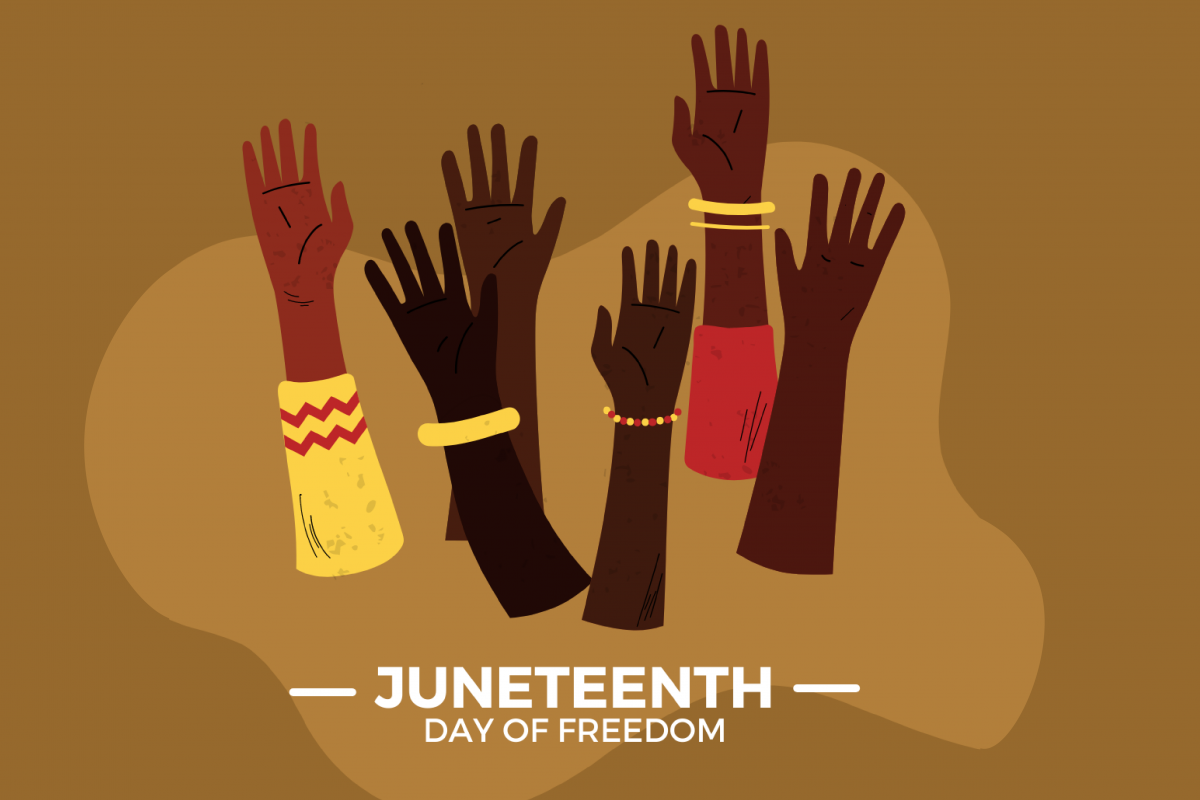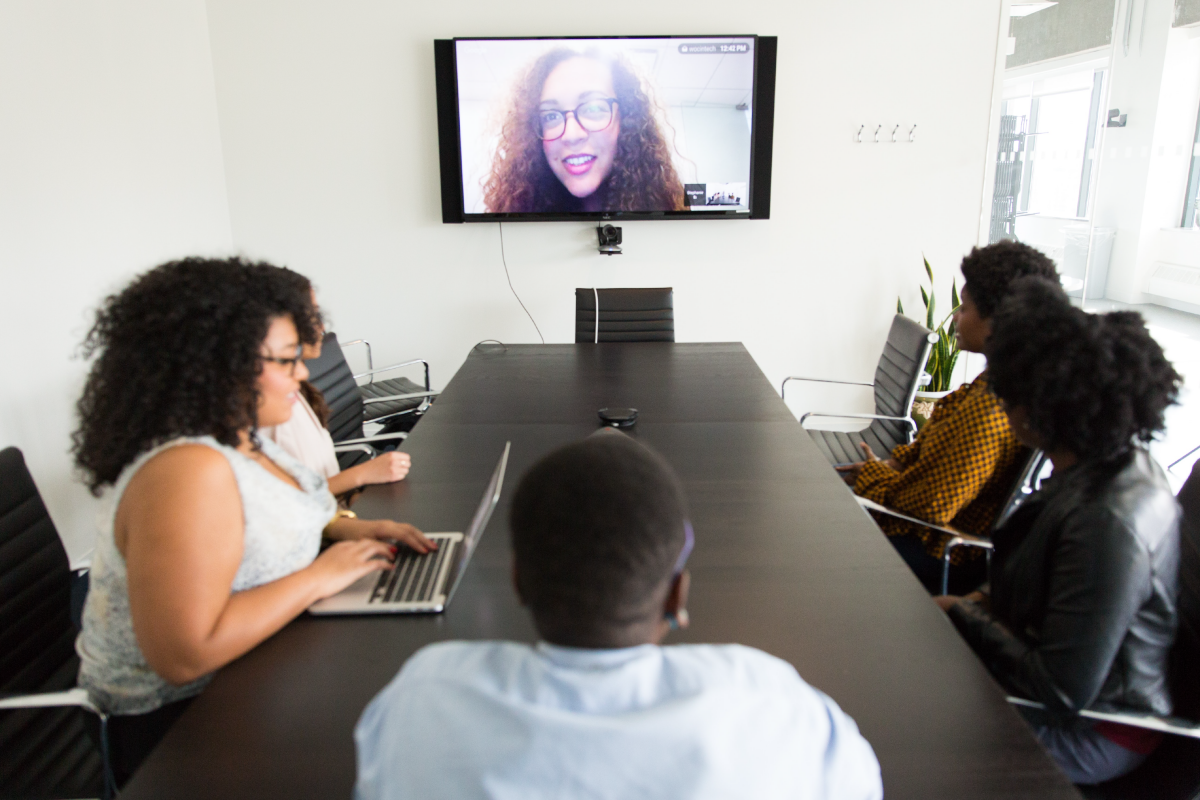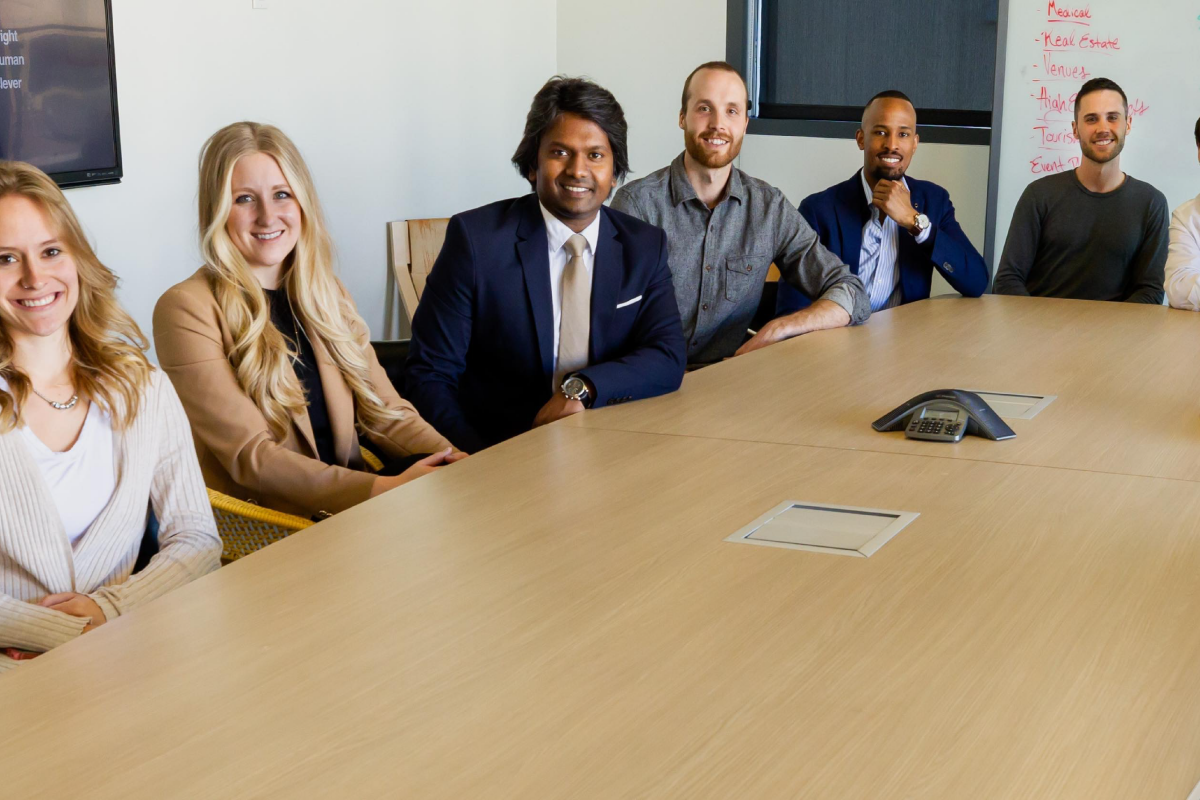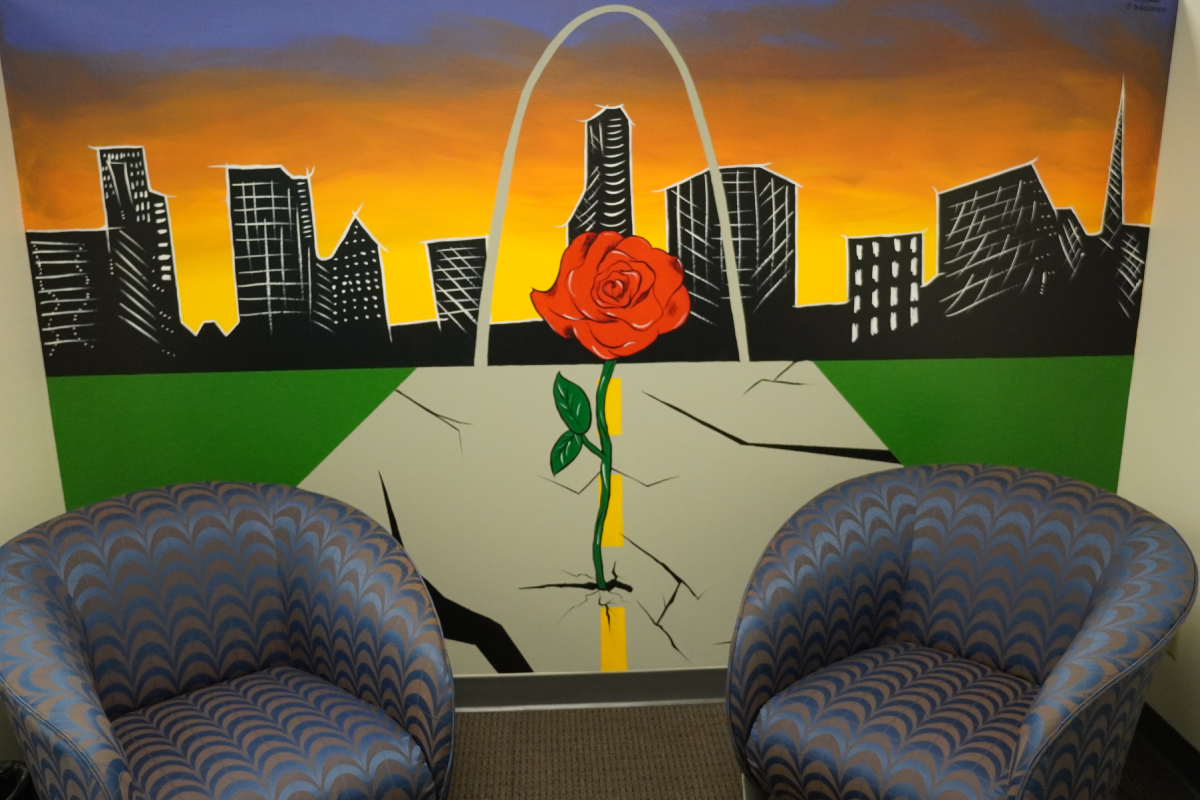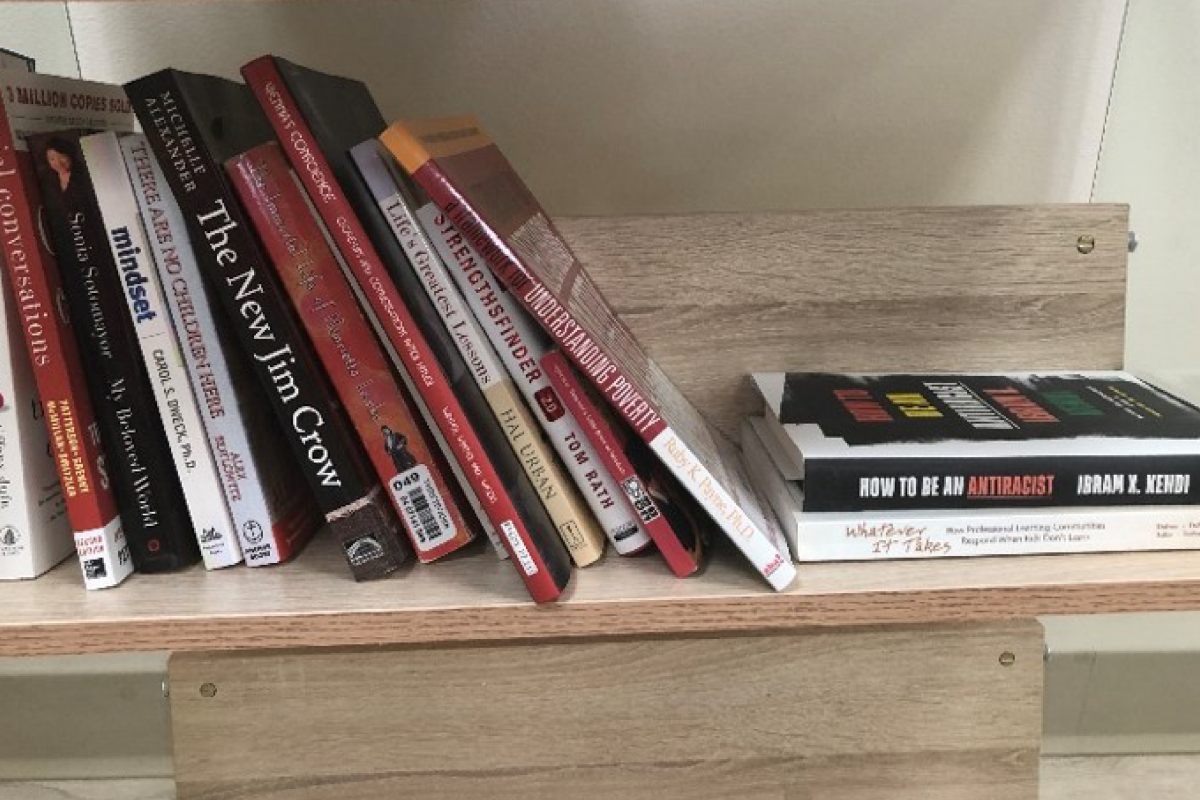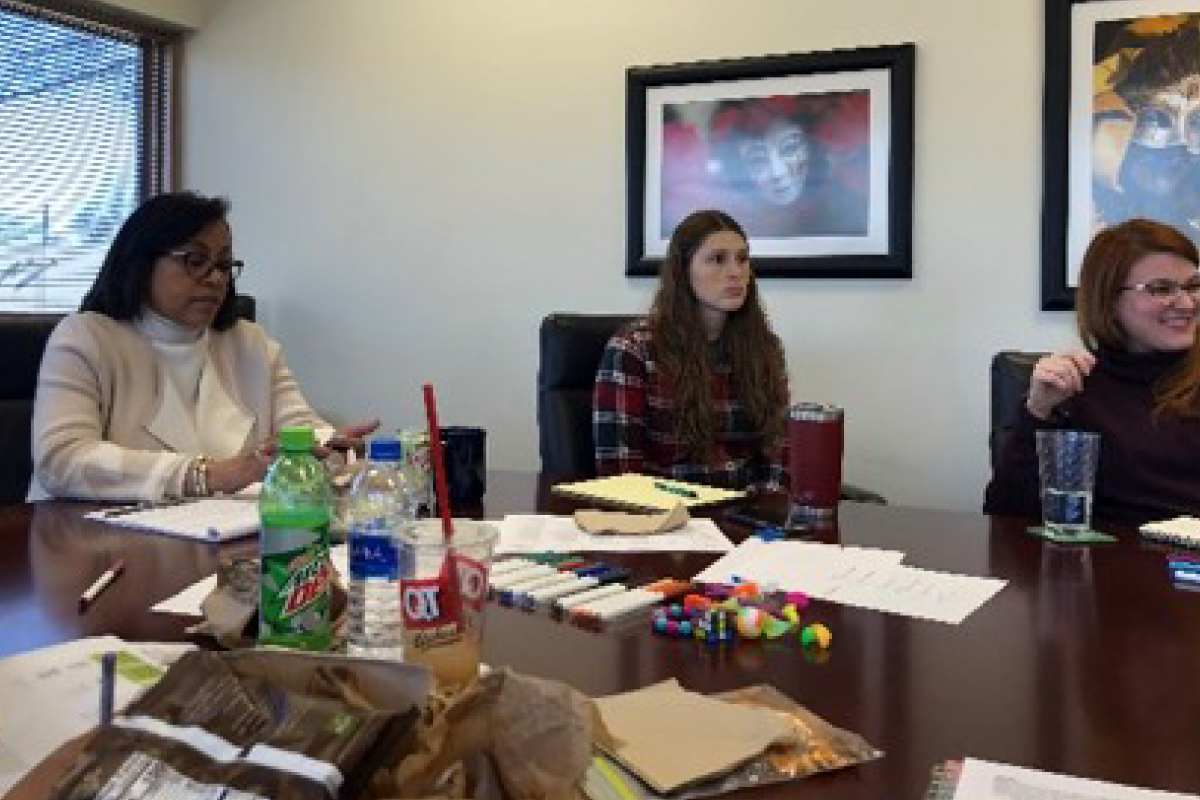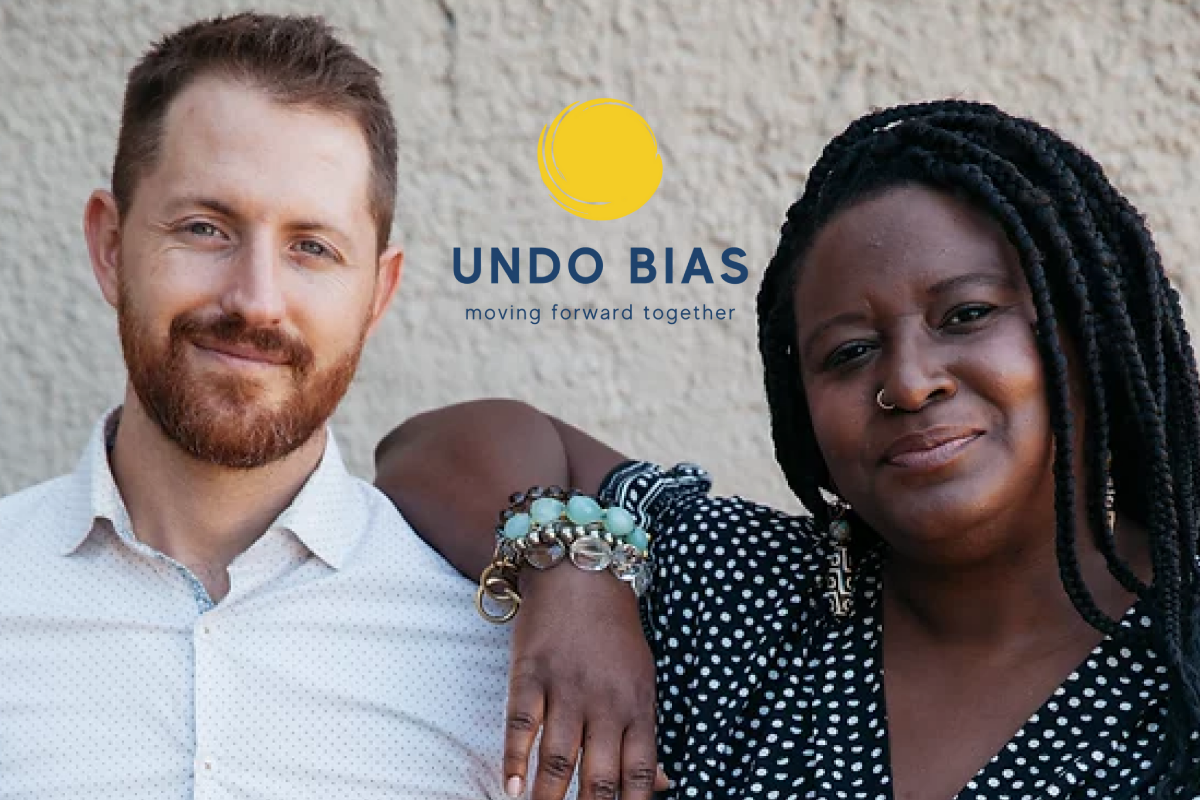Racial Equity
Because this work matters.
Substance use and incarceration disproportionately impact Black and brown people. The War on Drugs, a failed, racist, agenda, has only perpetuated the problem. And far too often, systems only begin to pay attention to drug crises (methamphetamine, opioids, etc.) when white, suburban communities are impacted. PreventEd must be willing to challenge and change the way we have historically been complicit in this oppression so that we can create solutions that prevent and reduce substance use disorders in our entire community.
Our mission to provide education on substance use must include how policies and practices have negatively impacted people of color, along with advocacy and involvement in efforts to reduce the negative impact. We must also address how we talk about substance use disorders. We know, for example, that white people with substance use disorders are most often channeled into treatment and recovery groups. But it is a sad reality that for far too long Black and brown people, particularly Black men, are hesitant to ask for help with a substance use disorder for fear of being criminalized. This has never been okay, and it is up to us to use our megaphone to highlight this disparity.
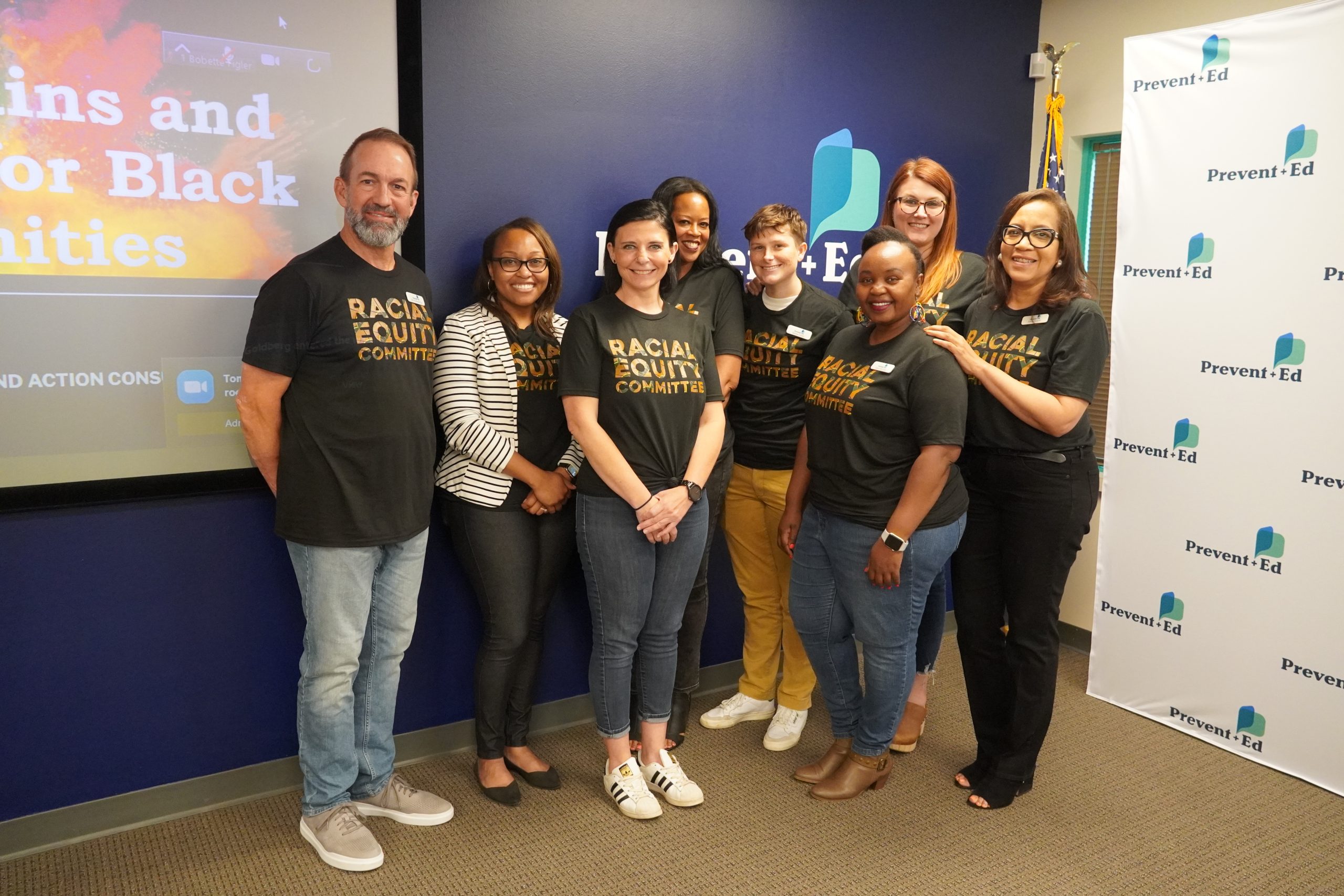
PreventEd’s Racial Equity Committee has representatives from the Board of Directors and across the organization. The current committee members include:
Amber Campbell, Administrative Support Specialist
Joy Carter, Prevention Educator – Committee Chair
Nichole Dawsey, Executive Director
Joyce Kariuki, Community Strategist
Ken Manwarring, Prevention Educator
Kim Rodriguez, Community Strategist
Alicia Smith, Director of Strategic Engagement
Emily Wilkerson, Community Strategist/Counselor
The “How”
We have established the goal of eliminating the disparity of employee experiences at PreventEd, from hiring to retiring, within 3 years. We believe that focusing on our internal team will prepare us to better serve our clients and students. To this end, we have identified benchmarks and developed outcomes to measure our success and track our progress.
We believe that this work has to be done at every level of our organization. Each department has its own racial equity goals statement and goals. See what that looks like across PreventEd:
Communications
The way we communicate, both through words and images, has a profound impact on the people and communities we serve. It has the power to reflect lived experiences, create trusting relationships, and advance racial equity. At PreventEd, we have both the ability and the responsibility as communicators to actively resist oppressive systems and put forth ethical, inclusive, and holistic representations of the communities with whom we work.
Our Communications Department is committed to building long-term, trusting relationships with community members and organizations in our efforts to provide information about PreventEd’s services and events. We aim to be proactive, not reactive, meeting folks where they are.
We are determined to advance Diversity, Equity, and Inclusion to foster Belonging, in which all folks feel empowered, engaged, and able to develop to their full potential. Currently, our Communications Department is:
- Ensuring that all PreventEd media (social media, website content, flyers, infographics) is representative of our agency and the communities we serve.
- Seeking out, and prioritizing, first-person voices for accurate, inclusive, and ethical storytelling and representation. In particular, the experiences, needs, and ideas of BIPOC (Black, Indigenous, People of Color) community members must be woven throughout our agency and our communications.
- Refreshing our website to include department specific racial equity statements, and to include a more holistic representation of our partners, their work, and the work we do together.
- Meeting with our partners, community members, and leaders to inform content creation and releases.
- Utilizing targeted and geofenced advertising to engage community members intentionally and strategically. We pay particular attention to folks living in underserved communities who may not know of, or have access to, PreventEd’s services and programs.
- Understanding and addressing the ways that discriminatory practices and implicit and explicit biases take shape in organizational communications and media. We are committed to using an intersectional approach in our work, recognizing how overlapping identities (such as race, ethnicity, religion, gender identity, gender expression, sexuality, and more) create unique forms of discrimination and privilege (Crenshaw, 1989).
Some of our ongoing goals include:
- Improve consistency in reaching target audiences. We will continue to use targeted and geofenced posts to reach these populations with the goal of increasing visibility and accessibility of PreventEd’s services.
- Conduct annual reviews of all programmatic and informational materials. During these reviews, we will use community and staff input alongside the most up-to-date research to inform revisions.
- Build long-term, sustainable relationships with our community members and organizations. Through community engagement and strategic communications, we hope to increase knowledge and use of PreventEd’s services and programs.
References
Kimberlé Crenshaw, “Demarginalizing the Intersection of Race and Sex: A Black Feminist Critique of Antidiscrimination Doctrine, Feminist Theory and Antiracist Politics.” University of Chicago Legal Forum, 1989, vol 1
Community Engagement
Formed in 2021, our newly created Community Engagement department is committed to harnessing the power of our communities to reduce and prevent alcohol and other drug misuse and related problems. We strive to increase our agency’s impact while creating supportive, affirming, and trusting relationships with local leaders, partners, and residents. The services and resources we offer should be readily accessible by everyone, no matter where they live or what identities they hold.
With the development of our department, we have intentionally incorporated racial equity into the work that we do by:
- Elevating the voices of racially minoritized community members, particularly Black, Latinx, and Asian and Pacific Islander folks. We aim to empower those who have had their agency diminished or removed because of structural and systemic racism and other forms of oppression.
- Shaping our community work based on the input and recommendations of community members. As experts of their experiences, wants, and needs, community members provide the most valuable input for how we, as an agency, can best support their well-being and development. We look to community members and local leaders for guidance at every step of our work.
- Using our reach to connect new and established Black leaders to one another. Local leaders are already doing invaluable work in their communities, and we hope to support these efforts by facilitating connections between and within communities.
Looking forward, we are excited and determined to continuously set racial equity goals for our department including:
- Building a Community Advisory Board representative of the St. Louis community to assist with outreach and with the structuring of community efforts.
- Connecting with various faith-based groups and organizations throughout communities. This includes, but is not limited to, churches, synagogues, mosques, and other houses of worship.
- Having all staff feel comfortable, confident, and competent in all communities they enter. Our ultimate goal is for racial equity to feel like second nature – it should be incorporated and woven into everything we do.
Counseling
We know that there are social, cultural, and economic barriers that prevent people from getting the help that they need. We also know that these barriers do not affect everyone equally. People of color, particularly Black Americans, bear a strikingly disproportionate burden of health and social consequences despite having equal or lower rates of alcohol and other drug addiction, misuse, and related problems.
Our counseling team recognizes that we have both the opportunity and the responsibility to change this. We aim to break down barriers that limit access to substance misuse prevention and treatment services by:
- Providing no-cost evaluations, educational workshops, and counseling for young people and their families through our GuidEd Program.
- Making appropriate referrals and providing ongoing support to young people and adults if treatment for substance use is necessary. We meet people where they are and help them get where they want to be.
- Providing adult assessments and referrals for $25. Those who are dealing with financial difficulties can receive these assessments at no cost.
- Offering same-day access to mental health and substance use treatment services free of charge. In partnership, ARCA is utilizing PreventEd’s mobile office to reach some of our community’s most underserved areas.
- Interrupting the criminalization of substance misuse by working with probation and parole officers to provide adult referrals and support. At PreventEd, we recognize substance misuse as a public health concern, not as criminal behavior.
Some of our ongoing goals include:
- Improving our community outreach and engagement efforts – We hope to become more ingrained with our community so we can better understand the changing needs.
- We recently opened Telehealth (video & Phone) services – The pandemic revealed a new way to increase access to our services by offering Telehealth options. We realized that for many people, virtual assessments and referrals can be much more accessible by allowing folks to take the call from wherever they find to be most comfortable and convenient.
- Building the CPS workforce within PreventEd to reflect and represent our community members’ identities, experiences, and needs.
- Assisting in the creation of a recommended school disciplinary policy. Students of color and students with disabilities face much more severe consequences for possession, distribution, and/or use of substances compared to their white and able-bodied peers. Our recommendation will support schools in their efforts to create more racially equitable and just disciplinary policies and practices.
- Increasing counseling staff so that we can better meet the needs of our clients. By increasing the number of staff and the diversity of staff, we will be able to accommodate assessments in a timely manner and in a variety of locations, return calls and provide appropriate resources more quickly, as well as expand our outreach efforts.
Human Resources
Our HR Department is committed to creating a more equitable and inclusive workplace where all employees feel valued, respected, and supported. This is not despite, but rather because of the different identities, backgrounds, and experiences each employee brings to the table. We are constantly working to evolve our recruiting, hiring, and retention practices to ensure that there are not only equitable opportunities, but also equitable outcomes.
In addition to following state and federal regulations, our racial equity work has included:
- Implementing a new applicant tracking system for our hiring process that will enhance our ability to collect equal opportunity data and mitigate human biases, whether conscious or not, in the review process.
- Providing a safe and confidential space for employees of all backgrounds and identities to share concerns and experiences.
- Un-centering white company culture by developing standardized interview questions and onboarding practices. During our onboarding process, each new employee meets with our Directors to learn how racial equity, and equity more broadly, is incorporated into each department at PreventEd.
- Facilitating candid conversations, both within and outside of the Human Resources Department, to further our agency’s goal of becoming an anti-racist organization.
Some of our ongoing goals include:
- Eliminating the disparity of employee experiences at PreventEd, from hiring to retiring, by 2023.
- Using our new applicant tracking system to better monitor our own progress, particularly with hiring and retaining employees of color, to determine how we can continue moving towards a more diverse, equitable, inclusive, and anti-racist environment.
- Revising our performance evaluations to include racial equity metrics and to distinguish competencies required at every level (individual contributor, supervisor, and Director). We will also revisit our definitions of performance metrics to ensure that there are transparent expectations of each role, fair
- Planning and implementing efforts to support pay equity and retention of employees. Pay equity and employee retention is heavily interlocked with Diversity, Equity, Inclusion, and Access. We hope to make strides towards rectifying past injustices with respect to unequal pay and discriminatory practices by:
- Evaluating areas of bias that may affect hiring and advancement opportunities, particularly for our employees of color and employees who identify as female.
- Continuing work accommodations, such as flexible work arrangements and time off for family leave, to best support all employees and their needs.
- Revisiting definitions of performance metrics to ensure that prejudices do not influence what is considered “good work”.
Prevention Resource Center (PRC)
Across Missouri, Prevention Resource Centers are the primary source of technical assistance support for community coalitions. The main goal of PRCs is to support the development of coalitions who aim to change substance use patterns in their community.
As a PRC, PreventEd services the counties of St. Louis City, St. Louis County, Jefferson, Franklin, Warren, St. Charles, and Lincoln. We recognize that the experiences and needs of these counties and their communities differ from one another due in part to the diverse identities and experiences held by residents. We pay particular focus to the persistence of racial disparities in substance use disorders (SUD), which points to the prolonged impact of systematic racism in public health efforts.
In alignment with our agency’s goal of becoming an anti-racist organization, the PRC Department has, and continues, to strive towards:
- Assisting with the development of coalitions and taskforces in communities that seek to make one.
- Creating an equitable distribution of funding and technical support to the coalitions we serve.
- Ensuring that people receive culturally competent prevention strategies, programming, and project efforts.
- Building and harnessing resiliency skills within communities. Community culture can be an invaluable protective factor for substance misuse by providing a support system and resource network for residents.
- Supporting community coalitions in their journeys towards anti-racist and racially equitable work.
- Addressing the intersectionality of SUD and social identities – research has shown that complex intersections of social identities (such as race, gender, sexuality, and socioeconomic status) create both protective and risk factors for lifetime substance use and the development of SUD.
Some of our ongoing goals include:
- Registering 5-10 more coalitions in the STL metropolitan area by 2024 that specifically serve disinvested communities and communities of color and are led by members of those communities.
- Conducting regular, ongoing reviews of community education materials with diverse staff members, community stakeholders, and Racial Equity Committee members.
- Encouraging all registered coalitions within our region to become trained on racial equity and coalition work, and actively supporting them as they grow. We will connect coalitions to local leaders and organizations who are providing this training.
- Intentionally seeking feedback from community members (i.e., training participants) on community education materials.
School-based Prevention Education
Our Prevention Educators are lifelong learners. We are committed to teaching both ourselves and our students, knowing that to best support young people in our community, we must first educate ourselves. This starts with the recognition that inequities are entrenched in the American education system. Schools are divided across racial and economic lines, intensifying the education gap between white students and students of color, and students experiencing financial stability and those who are not. Our educators are determined to close this gap in resources and support for our young people by:
- Meeting students where they are. We recognize that students have a diversity of backgrounds, interests, and experiences that have shaped who they are and how they can be supported. We strive to provide all students with the necessary life skills and tools to make decisions that are healthy for them.
- Reflecting a wide range of experiences and identities in the materials we teach. From the books we read, to the presentations we give; we want all our students to feel recognized, represented, and supported.
- Staying up to date on laws, policies, and research pertaining to substance use and consequences, including but not limited to health disparities and disproportionate involvement in the juvenile and criminal justice system through the school-to-prison pipeline. In working with young people of all backgrounds and identities, we must understand how institutional racism and other forms of systemic oppression have disproportionately harmed the health and well-being of people with disabilities, and Black and Latinx folk.
- Using language that is accurate, representative, and authentic to the individuals and communities with whom we work. We want to be thoughtful and intentional about our language, as well as willing to make mistakes and learn from these mistakes. As we work towards becoming an anti-racist organization, we will continue to educate ourselves and hold one another accountable to dismantle our own biases, prejudices, and assumptions.
- Expanding the list of school districts we work with to be more inclusive and representative of racially minoritized students, particularly Black, Latinx, and Asian and Pacific Islander students, and students of lower socioeconomic status.
Some of our ongoing goals include:
- Assessing school materials annually to ensure that they are meeting the needs of all students. This includes, but is not limited to:
- Reviewing word choice and phrasing in lessons to remove anything that is outdated, discriminatory, stereotypical, or offensive.
- Using examples, when writing, speaking, and displaying images, that reflect a broad range of identities and perspectives. All students, no matter race/ethnicity, age, gender, gender identity, sexuality, ability, religion, or socioeconomic status, should feel seen, heard, and respected.
- Adjusting lessons to reflect best practices in prevention education.
- Equitably serving school districts to provide prevention education to all communities, particularly those who have been most negatively impacted by racist practices and policies.
- Conducting regular check-ins with the Prevention Education Staff to discuss how we are incorporating racial equity and equity more broadly into our work, what barriers we are facing, and how we can overcome these obstacles. Looking ahead, we are excited and determined to use an intersectional equity framework to address overlapping and interdependent systems of discrimination.
- Expanding our professional development efforts to incorporate a more thorough intersectional frame. During our agency’s 2021 Staff Day Away, we had the opportunity to talk with Rabbi James Bennett from Congregation Shaare Emeth. What resulted was a powerful, informative, and engaging conversation about the Jewish faith and how to best support students of all religious backgrounds. We will continue to prioritize utilizing an intersectional frame to best understand, connect with, and support our students.
